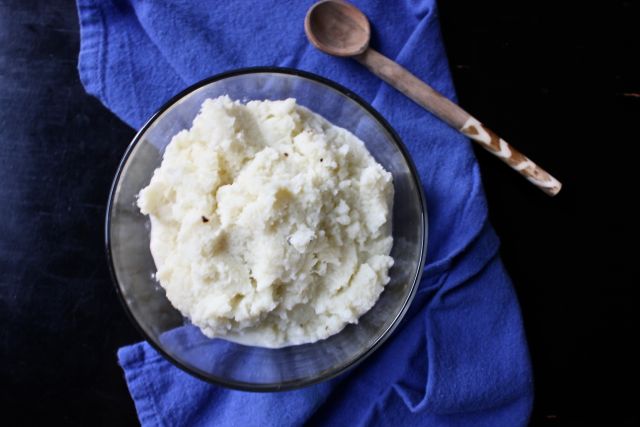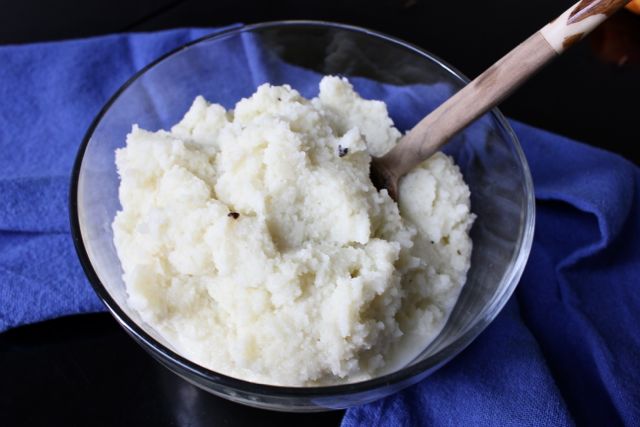Photo by Regina Felice Photography
It’s a misconception that eating healthily has to be expensive. In fact, it’s very manageable to have three all-organic healthy and nourishing meals (plus snacks!) each day no matter what your grocery and food budget may be -- I’ve spent a lot of time thinking about this concept and testing out new ways to eat well for cheap. There are ways!
If you don’t know where to start, follow these tips for eating well on a budget:
1. Cook As Many of Your Meals as You Can
This is at once the simplest and the most difficult tip: commit to cooking your meals rather than eating out. Not only does eating out add up quick, but it tends to be less healthy than what you would cook at home. Depending on your habits, you could save roughly $180 - 250 each month by not eating out. How’s that for savings?
2. Plan Your Meals Ahead of Time
Once you’re committed to cooking at home more, try planning your meals for the week ahead of time. Make use of versatile ingredients that you can use in multiple different dishes throughout the week, and stick to simple meals that don’t require too many ingredients. Doing this helps with a few things:
- You can buy bulk, which saves you on the total cost of items.
You’ll have less chance of unused ingredients going bad in your fridge and, as a result, you’ll waste less.
You’ll put more thought into what you’re eating and how much you’re spending, which will help you keep to you stick to your good eating and spending habits.
3. Eat What's in Season
This might seem like a no-brainer, but in-season foods are always cheaper than out of season foods, which were likely imported from elsewhere in the world.
So, to save money, focus on foods that are in-season. Learn to love cabbage and citruses in the winter, and go crazy with squashes and root plants in the fall. For a full list of in-season produce and recipe suggestions try Wise Breads’s post on seasonal produce. The Center for Urban Education and Sustainable Agriculture also has a very good, comprehensive chart.
Above all, avoid pricey pre-packaged foods. These foods will not only be pricier but also most likely contain ingredients that are not health-enhancing. Remember to read the ingredient list if you are purchasing packaged foods.
4. Take Advantage of Farmer’s Markets, CSAs, and Imperfect-Looking Vegetables
Some of the best places to find cheap and delicious in-season produce is at your local farmer’s market. Try going at the end of the day and asking for deals to save even more. If you don’t have a farmer's market close to you, try an online farmer’s market such as GrubMarket - they deliver straight to your door!
If you have a CSA in your area, you can also save money while getting ultra-fresh produce (sometimes things you’ve never even seen before!) by ordering from them.
Similar to a CSA is a new produce delivery service, Imperfect Produce, which delivers totally edible -- but “too ugly for supermarket” -- fruits and veggies for super cheap. For example, you could order a 7 - 9 pound box, which will last at least a week, of produce for roughly $12. Awesome!
5. Look for Sales and Take Advantage of Them
For the non-produce staples (and, okay, even some produce) keep an eye out for sales and take advantage of them. Be open to adjusting your weekly meal plan to accommodate a good deal you found at the supermarket or stocking up on dry goods when they go on sale.
Hint: in some supermarkets, if you buy one item that’s on a “2 for $3” sale, you’ll still be able to get it half off. Don’t buy both if you don’t need them.
6. Shop at Ethnic Markets
Want a cheap box of coconuts? Go to Chinatown or your nearest ethnic grocery store. Even for some more common items like rice noodles, or a bag of apples, ethnic grocery stores often still have good quality items for cheaper. Keep in mind that organic is ideal.
7. Focus on Plant Foods and Make Fewer Meat-Centric Dishes
I advocate a high plant-focused way of eating in order to get a wide variety of nutrients, but it's also a way to save money if you know how to balance your non-meat meals appropriately.
For those of you who don't want to omit meat entirely (and you don't necessarily need to - your body knows best!), try eating fewer meat-centric dishes. Rather than serving up a steak with a side of broccoli, make meat a compliment, rather than the focus. Cook a quinoa dish with a bit of ground turkey, or a veggie stir fry with some slices of lamb.
8. Start a Garden
Whether you’ve got a yard or a windowsill, starting a garden is the ultimate way to lower your food spending. After all, it’s free (well, almost -- you might still have to make a small upfront investment in seeds, pots, and soil).
Certain things, like arugula or bok choy, are super easy to grow for first timers, whereas others, like tomatoes, require a bit more care and attention. No matter what you grow, gardens are a great way to get a constant supply of nourishing food. Not to mention, there’s no fresher food than what you’re growing outside your front door.
9. Learn to Love Your Freezer
This tip goes back to that whole idea that by letting food go bad, you’re wasting money. Which is why any health-nut on a budget should really learn to love their freezer. There’s two big ways this can help:
First, you can freeze leftovers if you know you won’t be eating them in the next couple of days. Personally, if something’s been in my fridge for 2 days, I’ll either eat it or freeze it to make sure it doesn’t go to waste. Just make sure to mark when you put them in.
Second, if you’ve got a garden, weren’t able to eat all the food you got in your CSA or last week’s grocery store run, you can preserve a lot of fruits and veggies by either canning, pickling, or -- yes -- freezing them.
One of my favorite things to do is to take greens (arugula, parsley, etc.) and turn them into a pesto. Stick them in an ice cube tray and freeze them. That way, you’ll have a stash of homemade pesto you can easily pop on pasta for the rest of the year.
10. Embrace the Health Value of Super Basic Foods
You don’t have to be splurging on obscure and expensive health foods to be healthy. Some of the commonly available foods (brown rice, apples, broccoli, bananas, spinach) are incredibly healthy for you (when organic).
I think that expensive, trendy health foods like chia seeds or acai are part of the reason people assume eating well needs to cost money. Yes, I may be into these more trendy ‘superfoods', but in reality, some of the best stuff for you is downright common and unexotic — you can find amazingly cheap organic produce for less than $1 at the farmer’s market.
To add to that, these more expensive 'superfoods' can go a long way. You only need small amounts to reap the health benefits of these foods, so you won’t need to be purchasing them all that often.
11. Make Your Own Drinks
Buying beverages can get pricey quick -- not to mention, you might not have any control of the amount of sugar and other ingredients in them or whether or not they’re organic.
Personally, I prefer getting around this problem by making my own drinks. Especially since frozen organic berries are cheaper than fresh ones, buying a few big bags of organic frozen berries is an easy way to get my berry fix without breaking the bank. Simply toss some in a blender with water (or milk), lemon juice and a bit of honey (optional) and voila!
12. Get Creative with Your Recipes
This might be the best tip I can give you - There are no rules in the kitchen! Did you know you could make chocolate with mushrooms? Well, you can. And if mushrooms can be a core ingredient for one of your favorite dessert foods, then you should absolutely get creative with leeks, turnips, boysenberries, or whatever else is most affordable at the moment in your supermarket/farmers market.




















